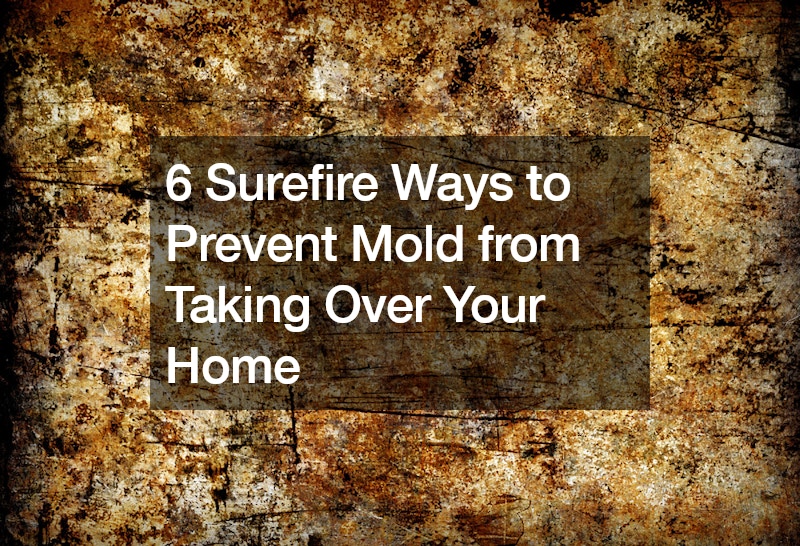

Mold growth in homes can be a serious problem, not only for the structural integrity of the building but also for the health of its occupants. Mold thrives in moist environments and can quickly spread if not addressed promptly. Fortunately, there are effective ways to prevent mold from becoming a nuisance in your home. Here are six surefire methods to keep mold at bay and maintain a healthy living environment for you and your family.
Understand Where Mold Thrives
One of the first steps in preventing mold growth is to understand where it thrives. Mold loves moisture, so any area with high humidity levels is susceptible to mold infestation.
This includes bathrooms, kitchens, basements, and areas near water sources. Be vigilant in identifying and addressing moisture sources in your home, such as leaking pipes, condensation on windows, or damp walls. Additionally, clogged gutters can contribute to water buildup around your home’s foundation, creating an environment conducive to mold growth. Along with controlling moisture levels, regular gutter cleaning is essential for preventing water damage and reducing the risk of mold infestation.
Regularly Check High-Risk Areas
Performing regular checks in high-risk areas of your home is crucial for mold prevention. These areas typically include bathrooms, kitchens, basements, and crawl spaces. Inspect for any signs of water damage, leaks, or moisture buildup. Pay close attention to areas around sinks, showers, and toilets, as well as near windows and doors where condensation may occur. By identifying and addressing potential moisture issues early on, you can prevent mold growth before it becomes a problem.
Ventilate Your Home
Proper ventilation is essential for maintaining healthy indoor air quality and preventing mold growth. Ensure that your home is adequately ventilated, especially in areas prone to moisture buildup. Use exhaust fans in bathrooms and kitchens to remove excess humidity and steam. Additionally, consider installing ventilation systems, such as whole-house fans or heat recovery ventilators, to bring in fresh outdoor air and expel stale indoor air.
Another tip for improving ventilation in your home is to open windows and doors whenever weather permits. Allowing fresh air to circulate throughout your home can help to remove stale air and reduce humidity levels. Additionally, using ceiling fans can help to improve air circulation and prevent stagnant air from accumulating in your home. Always remember that good ventilation helps to reduce moisture levels and discourage mold growth.
Remove Carpeting in Moisture-Prone Areas
Carpeting can trap moisture and provide an ideal environment for mold to thrive. In moisture-prone areas such as basements, bathrooms, and kitchens, consider removing carpeting altogether. Instead, opt for moisture-resistant flooring materials such as tile, laminate, or vinyl. These materials are less susceptible to mold growth and easier to clean and maintain. If you do have carpeting in your home, be sure to promptly address any spills or water damage to prevent mold from taking hold.
Invest in a Dehumidifier
A dehumidifier is an effective tool for reducing moisture levels in your home and preventing mold growth. These devices work by drawing excess moisture out of the air, helping to maintain optimal humidity levels. Place dehumidifiers in areas prone to high humidity, such as basements, crawl spaces, and laundry rooms. Be sure to choose the right size unit for your space and regularly empty and clean the water reservoir to prevent mold and bacteria growth. Investing in a dehumidifier can significantly reduce the risk of mold infestation in your home.
Clean and Disinfect Mold Promptly
If you do encounter mold in your home, it’s essential to clean and disinfect it promptly to prevent it from spreading. Avoid using harsh chemicals like bleach, as they can be harmful to both your health and the environment. Instead, opt for natural cleaning solutions such as vinegar and water, which are effective at killing mold spores and preventing regrowth. Simply mix equal parts vinegar and water in a spray bottle and apply it to the affected area. Allow the solution to sit for several minutes before wiping it away with a clean cloth. Regularly clean and disinfect areas prone to mold, such as bathrooms and kitchens, to keep mold at bay.
In Summary
Preventing mold growth in your home requires diligence and proactive maintenance. By understanding where mold thrives, regularly checking high-risk areas, ventilating your home, removing carpeting in moisture-prone areas, investing in a dehumidifier, and cleaning and disinfecting mold promptly, you can effectively prevent mold from taking over your home. If you take these simple steps, you can create a healthier and more comfortable living environment for you and your family.
.



